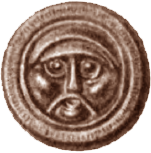While there is no set-in-stone date of when Christianity was brought to Scandinavia, it is estimated to have been done roughly between the tenth and eleventh centuries (Brink and Price 621). Christianization of Scandinavia seems to have been attempted as early as the eight century, as outlined in Alcuin’s Life of St. Willibrord, although it seems no progress was made at this time (Berend 74). It was not until the Frankish kingdom controlled Saxony, and Denmark became their neighbors, that Christianity slowly began to leak into the lives of those in Scandinavia (Berend 77).

As a society that relied on an oral and runic inscriptions as a mean of expressing their language, Christianity slowly transformed them into one that became more of a literate society, emphasizing books and written documents (Brink and Price 623). Denmark (and the areas of modern-day Scandinavia) moved towards this sort of society, and saw the emergence of historical documents that were often connected to the works of certain missionaries that spread throughout Scandinavia (Brink and Price 622).

Two of the most prominent figures in the conversion of the Scandinavians were the archbishop Ebo of Rheims, who went to Denmark for the first time in 823, and the bishop of Hamburg-Bremen, Ansgar, who went to Sweden a few years after him (Winroth 16). Ansgar is better known for his work involving the Danes (specifically working with the Danish people at first, and later moving to the Swedish peoples), as he is believed to have converted both the Danish kings Harald Klak, and his brother Horik, sometime around 827 A.D. (Brink and Price 623).

The conversion of Harald Klak was done under the instruction of Louis the Pious (Charlemagne’s son), whom Ansgar had direct connections with (DuBois 32). Ansgar may have been instructed to do so under the Holy Roman Empire (DuBois 32, 40), as in his vita he credits the emperor as having converted Harald Klak (DuBois 40). Ansgar continued his preaching all the way into the Swedish port called Birka, where he was received by the Swedish king Björn (Saints 44). Björn allowed Ansgar to preach the gospel there, and many of the Swedish people had converted to Christianity during Ansgar’s time there (DuBois 44-45). While these events only outline the first eleven chapters of Ansgar vita, he continued to stay around the area of Scandinavia until his death (DuBois 63).

When speaking about Norway, it seems that Christianity took a little while longer to spread over there. The Christianization of Norway is attributed to Hàkon Aðalsteinsfostri, and the two Óláfrs, who used Christianity as a means to legalize their subordination over local communities in the area, according to sagas about the Norwegian kings (Steinsland 88). Christianity grew rapidly due to the implications that came along with it: those who turned towards the faith were given positions of power (Steinsland 88). Under all these circumstances however, it is unclear whether or not the whole of Scandinavia chose to follow Christianity, or whether or not it was enforced on upon it in variety of different ways (Winroth 6).

[D. W.]